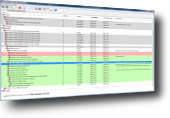Follow the SMART Formula
You may have heard of the SMART formula. If you haven't, it's a useful formula to form well-formed goals. A goal must be well-formed to increase your chances of achieving it.
What is the SMART formula? It's to make your goals specific, measurable, attainable, realistic, and time-bound.
Your goals must be specific. For instance, "Make more money" is not a specific goal. But "Make $10,000 in 30 days" is specific. When your goals aren't specific, it's not clear what you need to work toward achieving. It's like using a bow and arrow without a clear target to aim at.
Your goals also need to be measurable. This means that it's possible to measure your progress toward achieving the goal.
You also need to make your goals attainable. If a goal isn't attainable, then it means it's impossible to achieve it. And you'll fall flat on your face when trying to achieve it.
Your goals need to be realistic. If you set goals that are too challenging or unrealistic, you'll be setting yourself up for failure. On the other hand, you don't want to make your goals too easy. Set your goals challenging enough to stretch your "comfort zone" a bit, but don't make them too challenging.
You'll need to make your goals time-bound. This means you should set a time frame to achieve each goal. For instance, the "Make $10,000 in 30 days" goal has a time frame of 30 days. If you don't set a time frame, it's too easy to procrastinate on working toward achieving the goal. But a time frame will give you a sense of urgency to complete the goal. And that pushes you into action.
So remember to follow the SMART formula. When creating a goal in Goal Planner Plus, go through the Well-Formed Checklist to make sure your goal follows the SMART formula.
If you're ready to use Goal Planner Plus for an unlimited time, click here to get your license key now.

